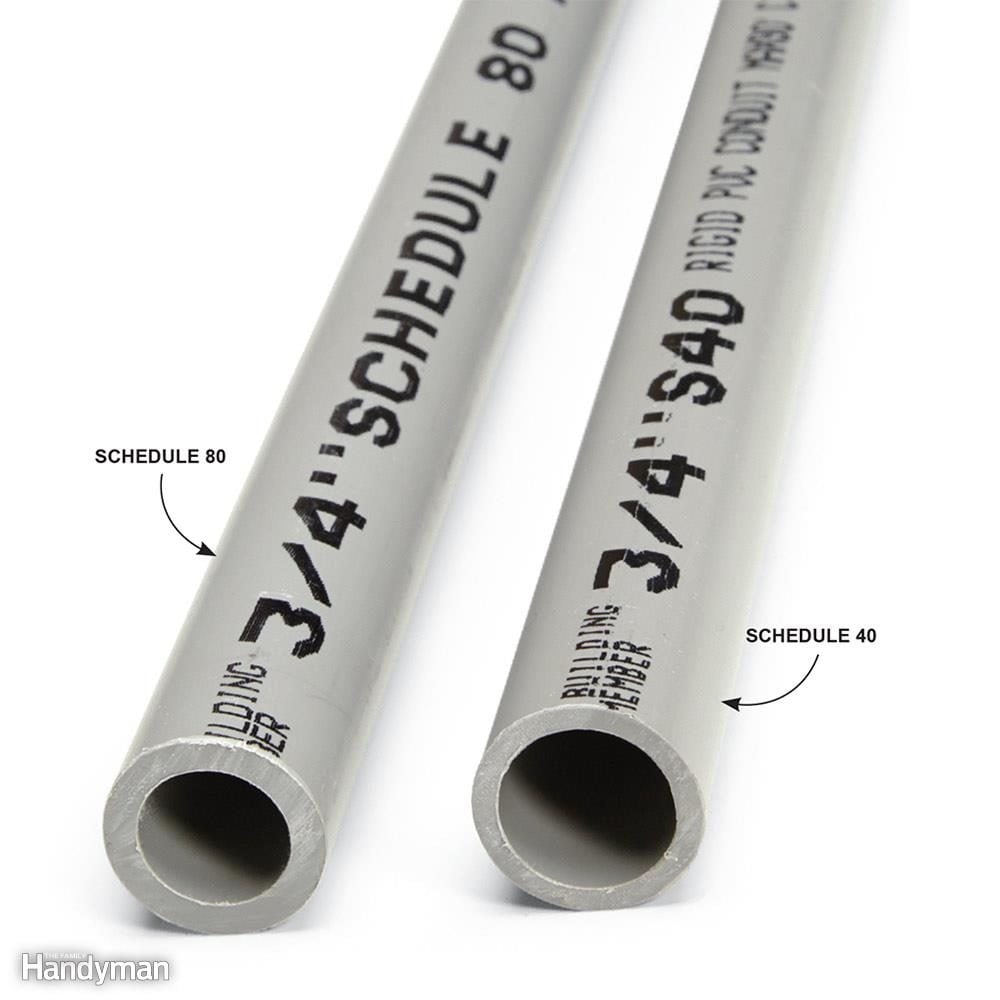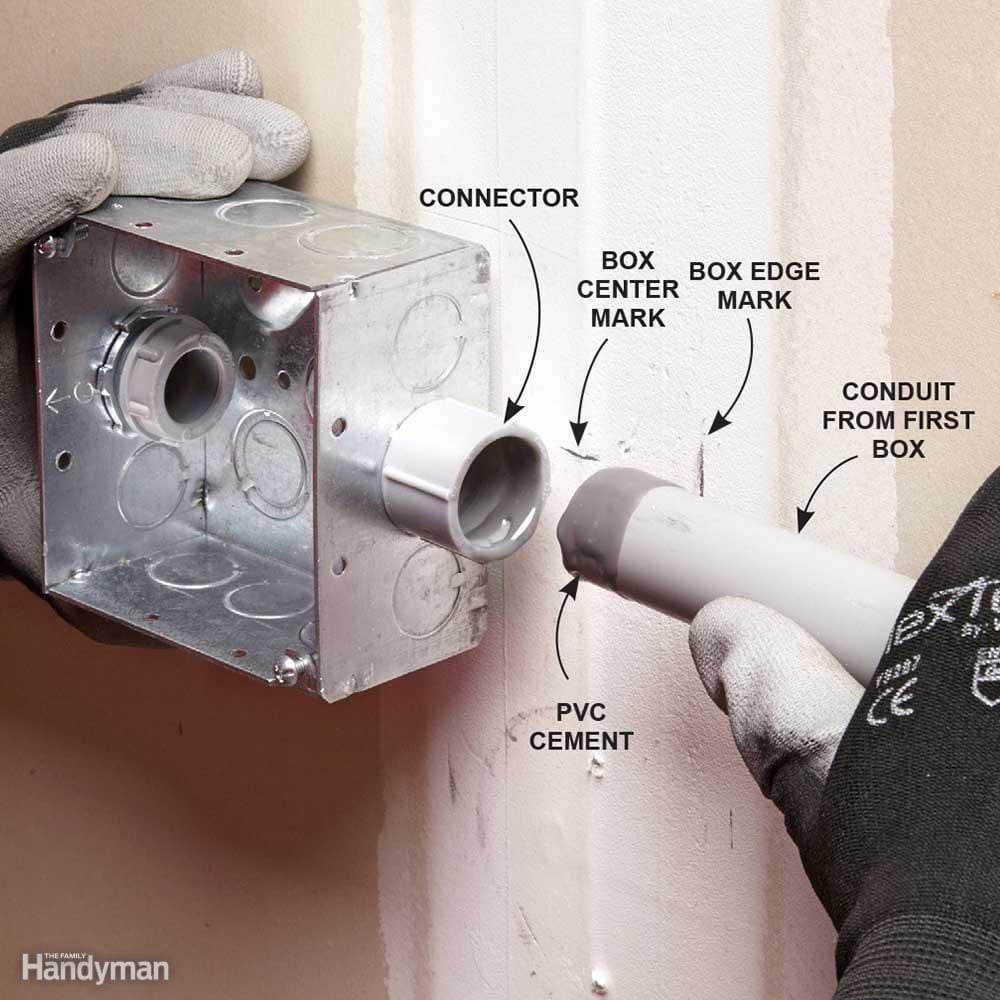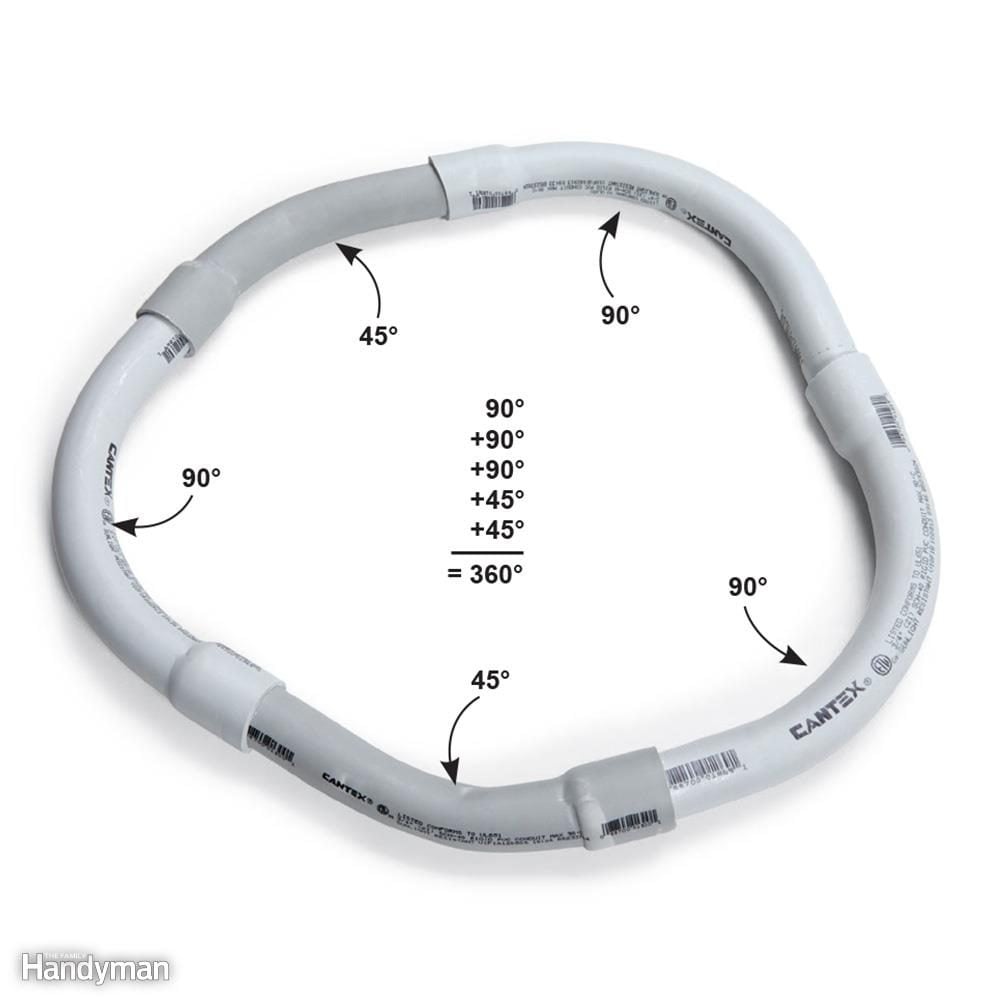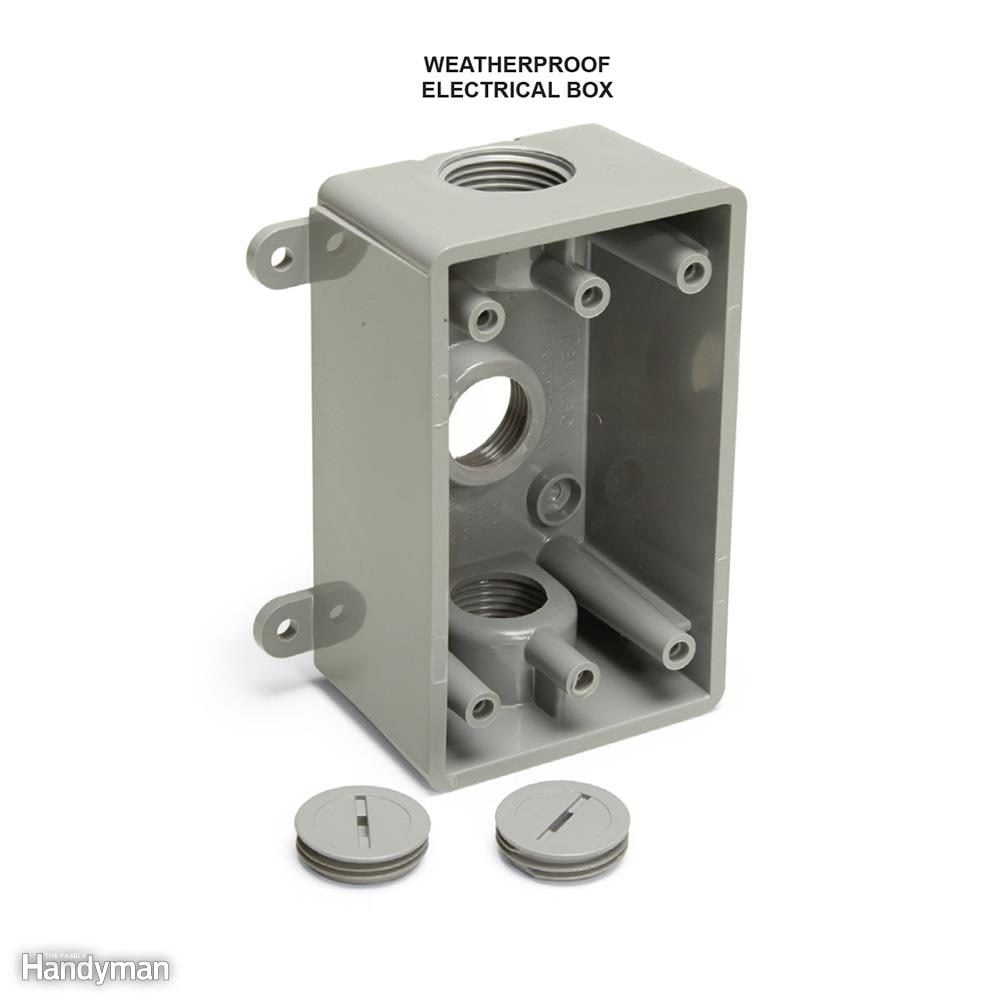It's cheap, easy and lightweight
Installing PVC Conduit

PVC Conduit: Schedule 40 vs. 80
Schedule 40 PVC conduit is cheaper and has a larger inside diameter, so it’s easier to pull wires through it. The plastic on Schedule 80 is thicker, but the conduit has the same outside diameter as 40, so the inside diameter is smaller. Always install Schedule 80 conduit in high-traffic areas or any other areas where it could get damaged, like behind a woodpile. The fittings (such as adapters and turns) are the same for Schedule 40 and 80.

Use THHN With PVC Conduit
THHN (thermoplastic high heat-resistant nylon-coated) is the best wire for pulling through PVC conduit. Other types of wire have a sticky rubber sheathing that makes them almost impossible to pull. Stranded THHN is used on most commercial jobs—it’s more flexible than solid wire, which makes it easier to pull, and it doesn’t spring back when you push it into the electrical box.

Deburr PVC Conduit with a Utility Knife
If you do end up with a rough edge when you cut PVC conduit, don’t forget to deburr the inside of the cut edge. Burrs can damage the insulation on the wires. There are a lot of fancy deburring tools available, but it’s just as easy to spin a utility knife on the inside of the conduit to smooth it out.

Use Larger PVC Conduit and Electrical Boxes
Install 3/4-in. PVC conduit instead of 1/2-in. if (1) you need to pull more than three wires through one section of conduit; (2) there’s any chance you’ll add wires in the future; or (3) if you have a long and winding run. The 3/4-in. conduit doesn’t cost that much more, and it’s a lot easier to pull wire through. Whatever size conduit you use, don’t fill it more than 40 percent with wires.
Single-gang electrical boxes will work, but if you have two or more conduit sections connecting to one box, buy double-gang. The male connectors on the ends of the PVC conduit take up quite a bit of room inside the box, leaving little room for devices. GFCI receptacles and other large devices, like dimmers, fit better in deeper (2-1/8 in.) boxes.

PVC Conduit Doesn’t Need Primer
Some PVC pipes require primer, but you don’t need to use primer when gluing conduit and fittings. Home centers usually sell the appropriate glue/cement near the the PVC conduit and fittings.
Measure as carefully as you can so you can avoid dry-fitting your connections. Unlike PVC plumbing pipes, PVC conduit and fittings can be difficult to pull apart once you shove them together. And always wear gloves to protect yourself from the glue.

Install Electrical Boxes and PVC Conduit One Run at a Time
It’s tempting to start by attaching all of the electrical boxes to the walls and ceiling and then run the conduit, but don’t do it. It’s easier to secure one box and then run the conduit from that box to the next one. Fasten the second box to the wall or ceiling after you fasten it to the conduit. Then you won’t have to fight the conduit trying to bend it into position. This is especially important if you have two boxes in close proximity because it’s difficult to bend short sections of PVC conduit. This process makes it easier to fasten the connectors, nuts and bushings to the electrical box first and then glue the PVC conduit to the connector.

Use Metal Hangers with PVC Conduit
Use metal hangers with PVC conduit; they hold up better than plastic. Choose the single-hole type. One screw is more than enough support, and compared with the two-hole strap, installation will go twice as fast.
The installation will look better if you use the kind of hanger that offsets the PVC conduit the same distance from the wall as the knockout on your elecrical boxes. For 1/2-in. through 1-in. PVC conduit, the maximum spacing between supports is 3 ft.

Cut PVC Conduit with a Circular Saw
There are lots of ways to cut PVC conduit, but a circular saw fitted with a metal blade gives you a smooth, fast, burr-free cut. If you don’t have a metal blade, a regular construction blade will do the job, but you may have to deburr the end of the conduit after you cut.

Use Metal Locknuts with PVC Conduit
Use metal conduit locknuts with PVC conduit because plastic locknuts can strip out and break.

Keep PVC Conduit Elbow Totals to No More than 360?
If you have a long run of PVC conduit with a whole bunch of twists and turns, consider splitting up the span with junction boxes. Every elbow you install makes pulling wire more difficult. And installing turns totaling more than 360? (four 90? elbows) is not allowed on one run. Pros rarely go beyond 180? because it’s easier to install an additional electrical box and pull the wire a shorter distance.

Drill a Hole in Electrical Box to Let Water Out
Sometimes water gets inside a weatherproof electrical box. It’s a good idea to drill a 1/4-in. hole in the bottom of the box, so if water gets in, it can get out. You can drill the hole before or after you install the box.

Pull Electrical Wires Like a Pro
It’s easy to push electrical wires short distances, but if it’s necessary to pull them a long distance, here’s how most electricians do it: First strip 4 in. of sheathing off two wires. Then cut half the strands off the two exposed wires (less bulk to pull through). Next, loop the remaining exposed wires through the eyelet of a fish tape (aka draw wire or draw tape). Finally, wrap all three wires in electrical tape all the way up to the eyelet of the fish tape.

Bushings Protect Wires Inside PVC Conduit
Even if you deburr the cut end of your PVC conduit, you can still damage wires when pulling them past the edges. A bushing provides a nice rounded, smooth surface for the wires to slide by. It’s cheap insurance, and the electrical inspector will be impressed.

Use Weatherproof Electrical Boxes Outdoors
Install weatherproof electrical boxes (aka bell boxes) outside. Unlike regular boxes, weatherproof boxes usually have threaded knockout holes to create a water-resistant connection. Many come with caps to plug the hole you don’t use. Make sure the box you buy has holes where you need them.


















